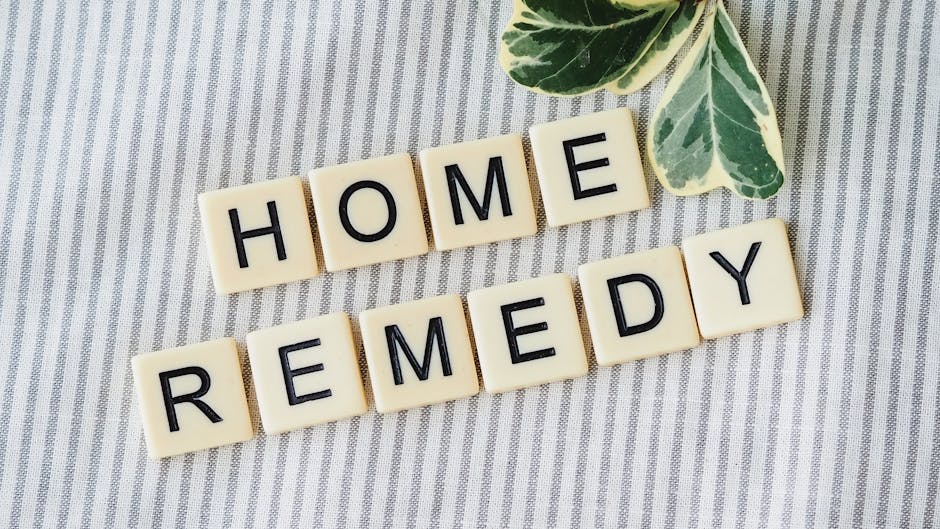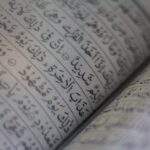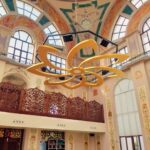How to Use the Arabic Alphabet in Art Therapy
Art therapy is a creative form of expression that can help people process emotions, reduce stress, and improve mental well-being. One unique and culturally rich approach to art therapy is incorporating the Arabic alphabet. In this blog post, we’ll explore how you can use the Arabic script in art therapy to unlock creativity and foster healing. 🌟
Table of Contents
1. Introduction to Art Therapy and the Arabic Alphabet
2. Benefits of Using the Arabic Alphabet in Art Therapy
3. Techniques to Incorporate the Arabic Script
4. Materials Needed for Arabic Alphabet Art Therapy
5. Conclusion
6. FAQs
Introduction to Art Therapy and the Arabic Alphabet
Art therapy combines the creative process of making art with psychotherapy, facilitating self-exploration and understanding. The Arabic alphabet, with its flowing lines and intricate designs, is not just a system of writing but a form of art in itself. Whether you’re familiar with the Arabic language or not, its aesthetic appeal can be harnessed in art therapy to evoke emotion and inspire creativity. 🎨
Benefits of Using the Arabic Alphabet in Art Therapy
Using the Arabic alphabet in art therapy offers several benefits:
1. Cultural Connection: Engaging with the Arabic script can provide a sense of connection to Arabic culture and heritage, offering a deeper layer of meaning to the therapeutic process.
2. Mindfulness and Focus: The intricate nature of the Arabic script requires concentration, promoting mindfulness and reducing anxiety.
3. Emotional Expression: The fluidity of the letters allows for a wide range of emotional expression, helping individuals articulate feelings that might be difficult to put into words.
Techniques to Incorporate the Arabic Script
Here are some techniques to integrate the Arabic alphabet into art therapy sessions:
1. Calligraphy: Learn the basics of Arabic calligraphy. This ancient art form can be both meditative and expressive, allowing you to focus on the beauty of each letter.
2. Abstract Art: Use the shapes and curves of the Arabic script to create abstract designs. Let the letters guide your brush strokes or pencil lines.
3. Mixed Media: Combine the Arabic alphabet with other artistic elements like collage, painting, or digital art. This approach can enhance creativity and provide a richer therapeutic experience.
Materials Needed for Arabic Alphabet Art Therapy
Here’s a list of materials to get you started:
🖌️ Paper and canvas
🖋️ Calligraphy pens or brushes
🎨 Paints or inks (watercolors, acrylics)
✂️ Mixed media supplies (magazines, scissors, glue)
Conclusion
Incorporating the Arabic alphabet into art therapy can be a transformative experience, offering a unique way to explore emotions and cultural connections. Whether you’re an art therapist looking to diversify your methods or an individual seeking a new form of expression, the Arabic script can open up new avenues for creativity and healing. 🧡
FAQs
Q1: Do I need to know the Arabic language to use the alphabet in art therapy?
A1: No, you don’t need to know the language. The focus is on the artistic and expressive qualities of the script, not its linguistic meaning.
Q2: Can children participate in Arabic alphabet art therapy?
A2: Absolutely! Children can benefit from the creative and calming aspects of working with the Arabic script, making it a versatile tool for art therapy.
Q3: Where can I learn Arabic calligraphy?
A3: There are many online resources, workshops, and classes available for learning Arabic calligraphy. Start with beginner tutorials and gradually work your way up.
Q4: What if I make mistakes while practicing Arabic calligraphy?
A4: Mistakes are part of the learning process! Embrace them as opportunities to improve and grow your skills. Remember, art therapy is about expression, not perfection.






